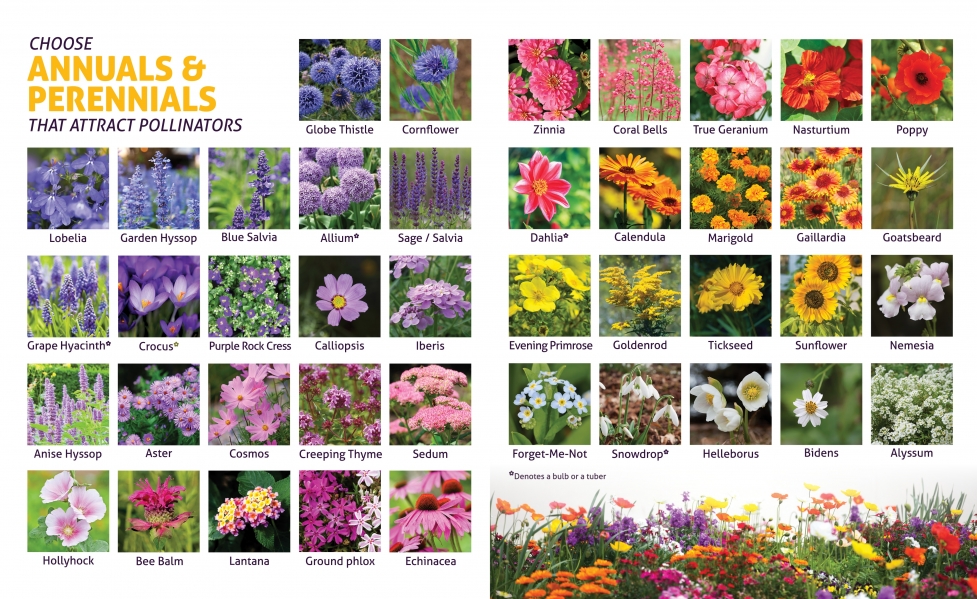Planting A Pollinator-Friendly Garden
Pollinators and your garden
Pollination can occur in many ways: bees, butterflies, animals, and wind. In Ontario, over 1000 insects and animals including bees and butterflies use pollen & nectar from flowers. By choosing locally grown, pollinator-friendly plants, you encourage these beneficial organisms to visit your garden and contribute to the health of the entire ecosystem.
Did You Know?Pollinators across the country face many threats including the loss of food and habitat, pesticides, Varroa mites and pathogens like nosema.
Here’s How You Can Help
• Use plants with different blooming periods to stagger flowering and attract bees throughout the growing season.
• Bees and pollinators prefer purple, yellow, white, and blue flowers with single, fragrant blooms.
• Choose composts, natural fertilizers and Health Canada approved insecticidal soaps to control garden pests.
• Take care of your garden. Prune and remove spent flower heads (“deadheading”) as needed, to encourage new growth and a longer flowering season.
• Consider adding a water feature or birdbath to your garden to provide essential fresh water to pollinators.
• Leaving dandelions in the garden during the early spring will help bees start the season off with a food source when there are few others available.
Tips to Garden Success
A long-lasting and truly satisfying garden starts with high-quality, fresh Ontario-grown plants. These plants haven’t undergone long distance travel or significant shifts in temperature and climate. Since they’re less stressed, they easily acclimatize into new environments, such as your garden. Choose pest and disease-resistant plants to ensure longevity.
Use Compost Or Fertilizer
An important key for a healthy garden is keeping it fertile.A well-composted mulch or livestock manure, or well-diluted bone or blood meal will help plants thrive. When planting new plants, use products high in phosphorus to encourage root growth.Read The Tag
Some of the best advice is located right on the plant tag. Most tags will make recommendations for the correct light conditions, watering guidelines, and planting location.Avoiding Over-Watering
Provide water to plants in the morning when temperatures are cooler and use mulches to help preserve water in the soil. These simple actions will help establish root systems, prevent evaporation, and are also a good practice for water conservation. Applying too much water can be detrimental to some plants.



